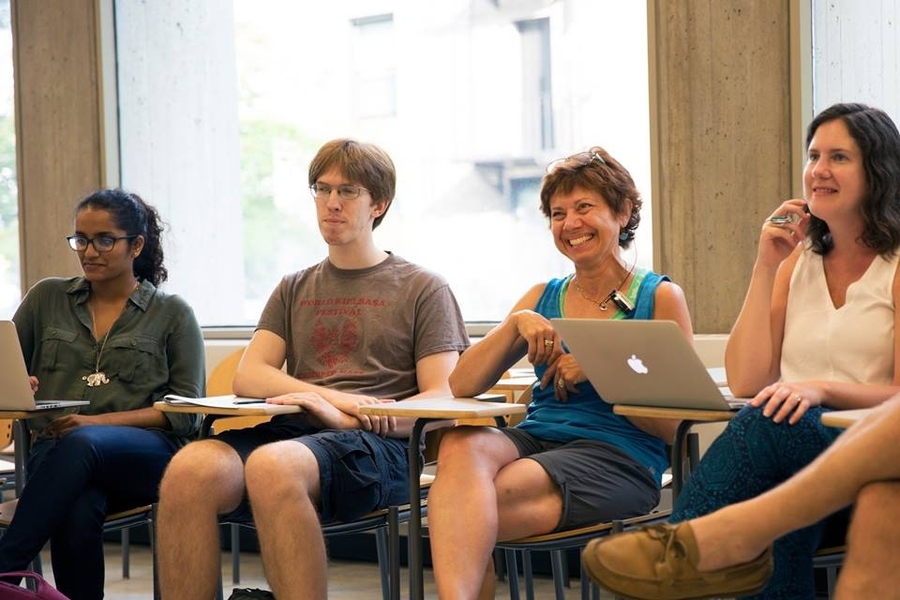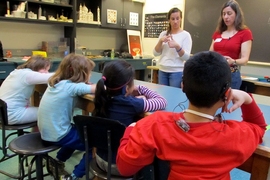On Aug. 15, 25 MIT students and staff members were engaged in a lively lecture and discussion in Building 66 — but the room was completely silent. The teacher, Carol Zurek, wrote a word on the board and gestured to the class to repeat her movements.
The students practiced the motion, incorporating them into their existing American Sign Language (ASL) vocabulary.
The class was organized by the American Sign Language and Deaf Culture Club at MIT and offered free to members of the MIT community. This fall, the club is hosting non-credit, level one and level two courses, supported by the MindHandHeart Innovation Fund and Graduate Student Life Grants.
The club was officially formed in 2016, though MIT has offered ASL classes organized by the group of students and staff since 2014, with support from the Media Lab. The interest level in the courses has been impressive, with nearly 80 people signing up for classes that are capped at 25 students.
“I think the interest speaks to the MIT community wanting to be open and inclusive,” said Barbara Johnson, a staff member in MIT Information Systems and Technology (IS&T) who spearheaded the effort to bring ASL classes to MIT and is deaf. “The goals of the club are to spread awareness of Deaf culture and ASL as a language, and to get people to see deafness as another component of diversity.”
The classes are structured in six week and eight week sessions and meet for approximately 90 minutes. Students use a book to guide them through learning vocabulary and basic conversational skills, and the instructor prompts students to engage in structured role playing.
“The keystone of the class is that voices are off,” Johnson says. “This can be quite a jolt for some people — figuring out how to communicate using a visual language.”
ASL Club president Gustavo Goretkin, a PhD student at the Computer Science and Artificial Intelligence Laboratory, says this is one of the most rewarding aspects of the class. “You might be conversing with a student and may even consider them a friend, but you’ll go months without hearing their voice,” he says. “It’s a very special and unique layer of connection to have with a person.”
Kristy Johnson, a PhD student in the Media Lab and a founding officer in the club, also appreciates the community she has found through the ASL Club.
“I have two kids and live off campus,” she explains. “So it’s been great for me to have an outlet that promotes so much engagement and connection. You have to really pay attention when you’re learning ASL. You have to look the other person in the eyes and focus on what they’re saying. You can’t be distracted or on your phone.”
Johnson was inspired to sign up for the classes in order to better communicate with her son and because of her general interest in languages.
“I use sign language extensively with my son, who has autism as well as many other special needs," she says. "He responds much more consistently to signing than he ever does to spoken speech. I also use it with my daughter, who just turned one.”
Learning ASL has also influenced Johnson's research at the Media Lab.
“It’s valuable to be able to communicate with lots of different people and types of learners,” she says. “The more you become aware of these different abilities, both through people like my son and through members of the Deaf community, the more we can invent for and with that community. If MIT wants to stay at the forefront of innovation, we have to be innovating for everybody.”
In addition to the ASL classes, the club plans to host social events in the fall, including lunchtime practice sessions and field trips. Looking to the future, the group hopes that ASL will become a more permanent fixture on campus and that MIT will offer for-credit courses.
To get a glimpse of the ASL Club in action, check out their video that was awarded first place in the MindHandHeart “Heart at MIT” video contest. To learn more and register for classes, visit the ASL Club website.












